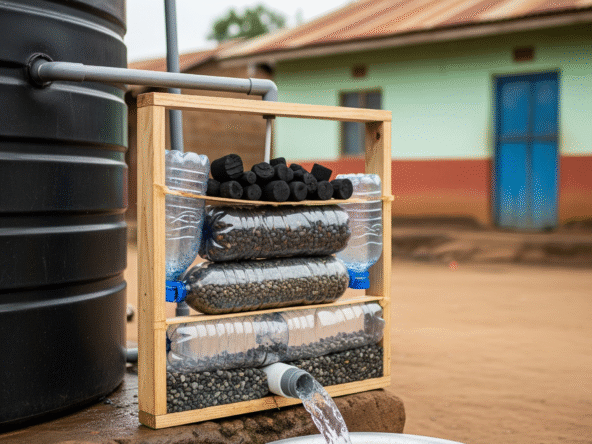As more homeowners and developers in Kenya seek efficient water storage solutions, underground water tanks have emerged as a smart alternative to traditional above-ground tanks. Whether you’re building in Kiambu, Machakos, Nakuru, or any high-density area, underground tanks save space while offering reliable storage and cooler water temperatures.
This guide breaks down the materials, construction methods, cost estimates, and design tips to help you plan and build a long-lasting underground water storage tank.
1. Why Choose Underground Water Storage?
Underground tanks provide several advantages over their surface counterparts:
- Save surface space—great for small plots
- Naturally cool water—less bacteria growth
- No UV exposure—extends tank lifespan
- Reduced risk of vandalism or tampering
- Can integrate seamlessly with rainwater harvesting systems
They’re ideal for use in urban compounds, peri-urban estates, and institutions with limited surface area.
2. Key Materials Used for Underground Tanks
| Material Type | Best For | Lifespan | Notes |
|---|---|---|---|
| Reinforced concrete | Long-term, large storage | 20–40+ years | Most durable; customizable |
| Poly/plastic tanks | Budget builds | 10–15 years | Easy to install, limited depth |
| Steel tanks | Industrial/farm applications | 15–30 years | Requires rust protection |
| GRP/fiberglass | Commercial sites | 25+ years | Lightweight, durable |
Compare options in Top Water Tank Brands in Kenya.
3. Design and Construction Requirements
Proper underground tank construction should include:
- Excavation depth: 1.5–3 meters depending on size
- Reinforced concrete walls or shuttered formwork
- Waterproof lining and external sealant
- Raised access cover to prevent surface runoff
- Overflow pipe connected to soak pits
- Optional pump system for tank refilling or redistribution
Need guidance on drainage design? See Integrating Outdoor Seating with Drainage Solutions.
4. Ideal Capacities and Use Cases
| Capacity | Application | Best Material |
|---|---|---|
| 2000 litres | Small household backup | Poly or concrete |
| 5000 litres | Medium family use | Concrete |
| 10,000 litres | Large estates or rental blocks | Reinforced concrete |
| 30,000+ litres | Schools, farms, or commercial sites | Concrete or steel |
Pair with DIY Tank Stands to support elevated tanks for pressure.
5. Estimated Costs of Underground Tank Construction
| Item | Approximate Cost (KSh) |
|---|---|
| Excavation (per m³) | 500 – 1,200 |
| Concrete (per 1000L capacity) | 6,000 – 9,000 |
| Waterproofing sealant (20L) | 3,000 – 6,000 |
| Manhole lid and access cover | 4,000 – 8,000 |
| Submersible or surface pump | 8,000 – 20,000 (optional) |
Costs vary depending on soil type, accessibility, and whether you use manual vs machine excavation.
6. Mistakes to Avoid During Construction
- Skipping waterproofing—leads to leaks and contamination
- No overflow connection—risk of surface flooding
- Inadequate ventilation—can lead to bad odor and bacterial growth
- Shallow placement—leaves tank vulnerable to damage or pressure changes
Tip: Inspect the tank annually and clean it every 12 months for longevity.
7. Underground vs. Above-Ground Tanks
| Feature | Underground Tanks | Above-Ground Poly Tanks |
|---|---|---|
| Space-saving | ✅ | ❌ Requires yard space |
| UV/heat protection | ✅ | ❌ Must be UV-stabilized |
| Installation cost | ❌ Higher | ✅ Lower |
| Maintenance access | ❌ Harder | ✅ Easier |
Want more flexible systems? Consider linking both underground and surface tanks using multi-tank systems.
Investing in an underground water tank is a strategic move for Kenyan homeowners and institutions that want to maximize space, enhance storage, and build resilient systems. With the right materials and professional input, underground storage can last decades while improving water reliability.
Explore More:


